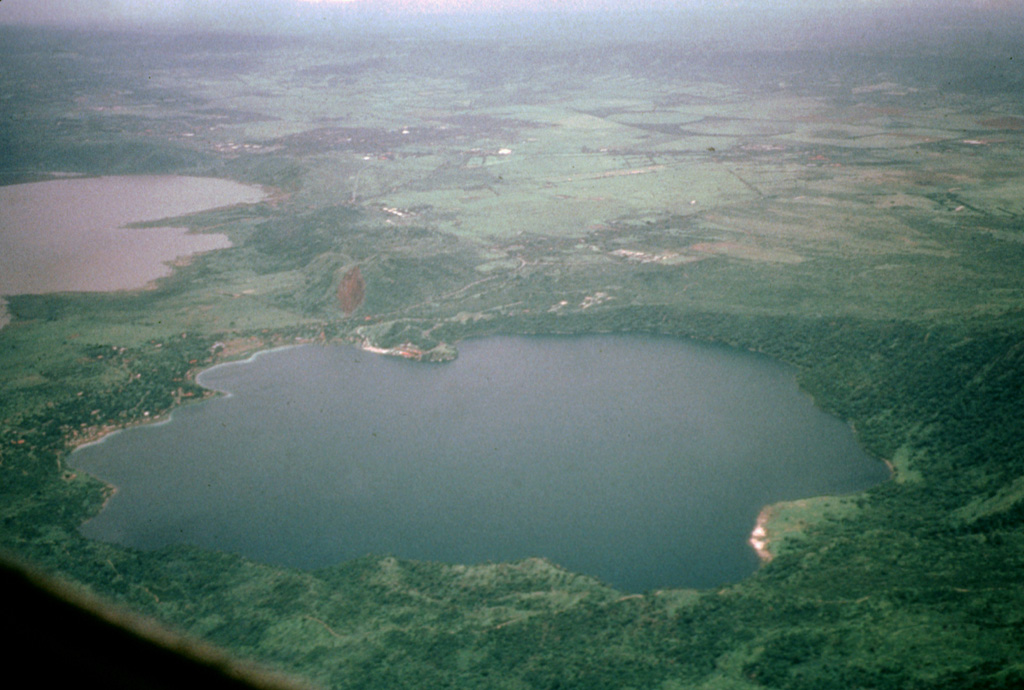Global Volcanism Program | Image GVP-08079

Laguna de Jiloa was the source of a major explosive eruption about 6500 years ago that deposited the widespread Jiloa Pumice, which blankets the Managua area. Laguna de Jiloa (also spelled Xiloa) is seen here in an aerial view from the north with Lake Managua at the upper left. The rim of the 2.5-km-wide caldera is lowest on the SE (left) and rises to 220 m on the NW side. Cones of the Nejapa-Miraflores alignment can be seen extending to the south from the center of the far caldera rim.
Photo by Jaime Incer, 1996.
![]() This image is made available under the Creative Commons BY-NC 4.0 license terms.
This image is made available under the Creative Commons BY-NC 4.0 license terms.

Apoyeque
